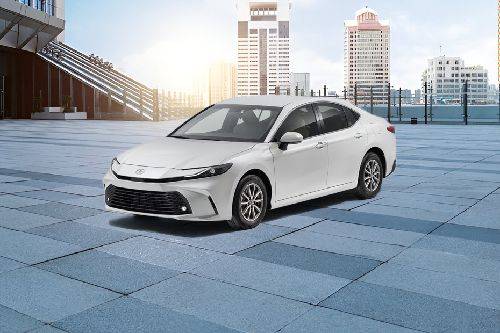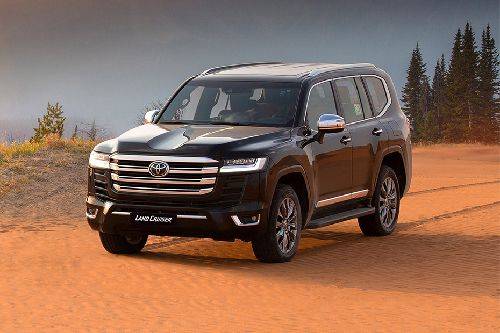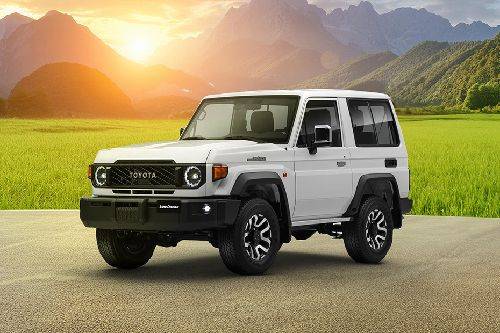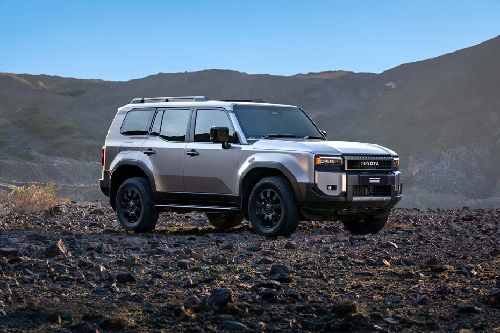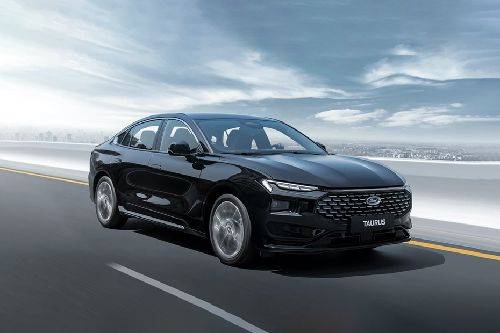Toyota Yaris 2024 Comparison: Nissan Sunny, Honda City, and Hyundai Accent

SAUDI ARABIA : The Toyota Yaris 2024 has a striking exterior design incorporating sleek and bold elements in equal measure. Some of the eye-catching details are the sloping roof, large front grille, LED headlights, and a small boot-lip spoiler. All this makes for a dynamic stance – something the old car could not boast about.
KEY TAKEAWAYS
Which car has the most premium interior?
The Hyundai Accent has a modern and sporty interior with premium features like a Bose premium audio system and a powered sunroof.Which car has the largest boot space?
The Honda City has the largest boot space, with a capacity of 510 liters.Which car has the best fuel economy among the four options?
The Toyota Yaris 2024 has the best fuel economy, with a claimed mileage of 22.4 kmpl (4.4 L/100 km). The updated interior gets dash-integrated cup holders and multiple storage cubbies. The cabin feels nicer than before, thanks to some soft-touch materials, a new 9-inch touchscreen, a 7-inch MID with a digital speedometer, and a leather-wrapped multi-function steering wheel.
The updated interior gets dash-integrated cup holders and multiple storage cubbies. The cabin feels nicer than before, thanks to some soft-touch materials, a new 9-inch touchscreen, a 7-inch MID with a digital speedometer, and a leather-wrapped multi-function steering wheel.
Features worth mentioning include 16-inch alloy wheels, keyless entry & go, a wireless charger, automatic climate control with rear vents, and auto-folding wing mirrors. The Toyota Safety Sense adds Pre-Collision System with Adaptive Cruise Control and Lane Departure Alert. Powering the new Yaris is a 1.3-liter four-popper making 97 hp and 122 Nm of torque.
 Driving the front wheels through a CVT gearbox tuned for efficiency, it claims an astounding 22.4 kmpl (4.4 L/100 km). However, the Yaris takes well over 11 seconds to hit 100 kmph. In KSA, the Toyota Yaris 2024 is sold in Y, Y Plus, and YX trims. Prices range between SAR 63,135 and SAR 75,670. But what is the competition like?
Driving the front wheels through a CVT gearbox tuned for efficiency, it claims an astounding 22.4 kmpl (4.4 L/100 km). However, the Yaris takes well over 11 seconds to hit 100 kmph. In KSA, the Toyota Yaris 2024 is sold in Y, Y Plus, and YX trims. Prices range between SAR 63,135 and SAR 75,670. But what is the competition like?
Design and interior
The new Nissan Sunny is 71 mm longer and its wheelbase is a whopping 118 mm longer. Its top-end trim boasts 17-inch machine-finished aluminum alloy wheels – two sizes larger than what the Yaris offers. Its bigger footprint also affords more road presence, making it less susceptible to be pushed around by SUVs. The Sunny’s 425-liter boot is 50 liters smaller, though.
 Nissan’s V-Motion grille finished in black goes well with the sweptback LED headlamps for a modern-looking front fascia. The black plastic trim in the C-pillar lends the visual effect of a floating roof, while the rear gets a boot-lip spoiler, Nissan’s signature taillights, and a faux diffuser.
Nissan’s V-Motion grille finished in black goes well with the sweptback LED headlamps for a modern-looking front fascia. The black plastic trim in the C-pillar lends the visual effect of a floating roof, while the rear gets a boot-lip spoiler, Nissan’s signature taillights, and a faux diffuser.
The Nissan Sunny’s interior has a sense of space no matter where you are seated – the beige/black dual-tone trim making it more evident. Rear-seat passengers have plenty more knee room, shoulder room, and headroom than those in the Yaris. There is a fair share of soft-touch materials, contrast stitching, shiny bits of plastic, and even faux carbon-fiber trim.
Features and equipment
Some of the finer touches come in the form of a flat-bottom steering wheel, a customizable 7-inch semi-digital instrument cluster, and wireless charging. The Sunny’s equipment list sees inclusions like split-folding rear seats, automatic climate control, a 6-speaker audio system, and a 7-inch touchscreen. Unlike the Yaris, the Sunny gets Apple CarPlay and Android Auto.
 The Sunny also gets automatic headlights, Hill Start Assist, Vehicle Dynamic Control, and TPMS. The Nissan Intelligent Mobility package brings Intelligent Forward Collision Warning, Intelligent Emergency Braking, Blind Spot Warning, Rear Cross Traffic Alert, Intelligent Driver Alertness, and Intelligent Around View Monitor with Moving Object Detection.
The Sunny also gets automatic headlights, Hill Start Assist, Vehicle Dynamic Control, and TPMS. The Nissan Intelligent Mobility package brings Intelligent Forward Collision Warning, Intelligent Emergency Braking, Blind Spot Warning, Rear Cross Traffic Alert, Intelligent Driver Alertness, and Intelligent Around View Monitor with Moving Object Detection.
Engine and performance
The Nissan Sunny is more powerful than the Yaris. Its 1.6-liter four-cylinder engine produces 118 hp and 149 Nm of torque. Mated to Nissan’s XTronic CVT gearbox, the Sunny should reach 180 kmph, dispatching the 0-100 kmph run in less than 11 seconds. While quicker than the Yaris, the Sunny’s claimed 19.1 kmpl (5.2 L/100 km) isn’t as good.
Design and interior
The new Honda City comes across as a sporty and elegant package, despite being longer and wider than the Yaris. Extending that sporty feel is the generous application of gloss black treatment on the front grille & air dam, ORVMs, rear bumper, and above the taillights.
 Amplifying the elegance are complex but stylish multi-array LED headlights, 16-inch black-tone alloy wheels, sharp character lines, a black decklid spoiler, and suave Z-shaped taillights. The interior feels minimalistic and well-designed, sporting good build quality and tactile controls – special mention goes to the knurled HVAC knobs.
Amplifying the elegance are complex but stylish multi-array LED headlights, 16-inch black-tone alloy wheels, sharp character lines, a black decklid spoiler, and suave Z-shaped taillights. The interior feels minimalistic and well-designed, sporting good build quality and tactile controls – special mention goes to the knurled HVAC knobs.
The seats look nice and are comfortable with large headrests for adequate support. The rear bench houses a center armrest with integrated cup holders, while the boot space is 510 liters – the Yaris gets neither. The Sport trim has a black interior with contrast red stitching & trim, while other trims feature a sophisticated ivory interior theme.
 Features and equipment
Features and equipment
The Honda City treats its occupants with automatic climate control with rear vents, leather upholstery, push-button ignition, ECON drive mode, paddle shifters, plus steering tilt & telescopic adjustment. The Yaris misses out on the latter. It also misses the 8-speaker audio system, Android Auto, and higher-definition gauge cluster.
The City’s Honda Sensing safety gear includes Adaptive Cruise Control, Collision Mitigation Braking System, Road Departure Mitigation System, Forward Collision Warning, Lane Departure Warning, and Lane Keeping Assist System. There’s also Honda Lanewatch, ISOFIX anchors, and six airbags.
 Engine and performance
Engine and performance
The 1.5-liter i-VTEC engine powering the Honda City develops 119 hp with 145 Nm, still managing 21.1 kmpl (4.7 L/100 km). The City’s CVT gearbox is smooth but not performance-oriented. However, its top speed of 190 kmph is more than that of the Yaris.
Design and interior
The all-new Hyundai Accent is a notable 110 mm longer and 25 mm wider than the Yaris. Its wheelbase is 170 mm longer as well, while its new design borrows influence from the larger Sonata. The low-slung nose features a full-width LED light bar, with the headlights placed in the bumper and alongside the new parametric grille.
 The sculpted rear half appears dramatic with its pronounced haunches, and the 16-inch two-tone alloy rims look the part as well. The rear of the new Accent gets a full-width light bar and multiple other integrated LEDs, forming a stylish taillight. The Hyundai Accent’s design is modern and sporty, if a bit overdone from certain angles.
The sculpted rear half appears dramatic with its pronounced haunches, and the 16-inch two-tone alloy rims look the part as well. The rear of the new Accent gets a full-width light bar and multiple other integrated LEDs, forming a stylish taillight. The Hyundai Accent’s design is modern and sporty, if a bit overdone from certain angles.
The new Accent’s interior appears contemporary at first glance, courtesy of good-quality trim and unique design details. The classy twin-spoke steering wheel, curved digital displays, supportive front seats, driver-focused dashboard, and stitched leatherette combine to provide a sporty yet premium feel. The quality fit & finish make this interior feel nicer than that of the Yaris.
 Features and equipment
Features and equipment
The new Hyundai Accent gets a hands-free boot release, a Bose premium audio system, heated & ventilated front seats, ambient mood lighting, and a powered sunroof. There are heated ORVMs, automatic climate control with rear vents, paddle shifters, drive-mode select, and an 8-inch infotainment system.
Also included is a digital instrument cluster with different display modes and a wireless charger. The Hyundai SmartSense suite adds Lane Keeping Assist, Lane Following Assist, Forward Collision Assist, and Blind Spot Collision Avoidance Assist. The new Accent also offers parking sensors, a rearview camera, six airbags, and Rear Occupant Alert.
 Engine and performance
Engine and performance
Under the hood of the new Hyundai Accent is a 1.5-liter four-cylinder petrol engine producing 113 hp and 144 Nm of torque. Unlike the Yaris, the Accent is available with two transmissions: a 6-speed automatic and an IVT (Hyundai-Kia speak for a CVT).
The Gamma engine has a claimed mileage of 18.9 kmpl (5.3 L/100 km), making it less frugal than the Yaris. The new Hyundai Accent is slightly faster though, with a top speed in the neighborhood of 185 kmph.
 Conclusion
Conclusion
Even though outright reliability is a non-issue amongst these cars, Toyota’s reputation on this front is legendary. Moreover, the Toyota Yaris 2024 boasts the best-in-class fuel economy and starts from just SAR 63,135 – affordability and frugality. However, if you want a bigger and more spacious car that’s also quicker, then check out the Nissan Sunny.

The Honda City is for those who are uncompromising on fuel economy, top speed, or a well-designed cabin. Its cabin features interesting design elements and comes with a large 510-liter boot. Stretch your budget and the larger and roomier Hyundai Accent becomes a good choice. Its stylish interior looks nice and offers features that its competitors lack.
Toyota Car Models
Don't Miss
Automotive News and Reviews
- Latest
- Popular
You might also be interested in
- News
- Featured Stories
Featured Car
- Latest
- Upcoming
- Popular
Compare & Recommended

|

|
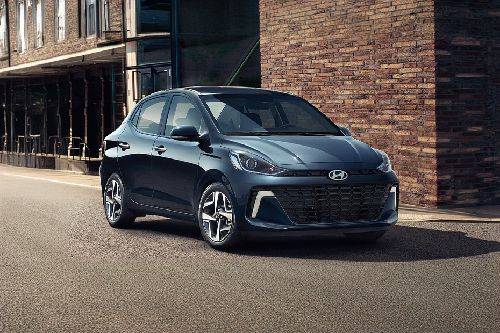
|

|

|
|
Transmission Type
CVT
|
Automatic
|
Automatic
|
Automatic
|
Automatic
|
|
Engine Displacement
1298
|
1197
|
1198
|
1598
|
1495
|
|
Power
97Hp@6000rpm
|
61Hp@6000rpm
|
81Hp@6000rpm
|
123Hp
|
108Hp@4500rpm
|
|
Torque
122Nm@4200rpm
|
113Nm@4200rpm
|
113Nm@4000rpm
|
-
|
140Nm@6000rpm
|
|
|
Trending Sedan
- Latest
- Upcoming
- Popular
 Features and equipment
Features and equipment Engine and performance
Engine and performance Features and equipment
Features and equipment Engine and performance
Engine and performance Conclusion
Conclusion






















































































































